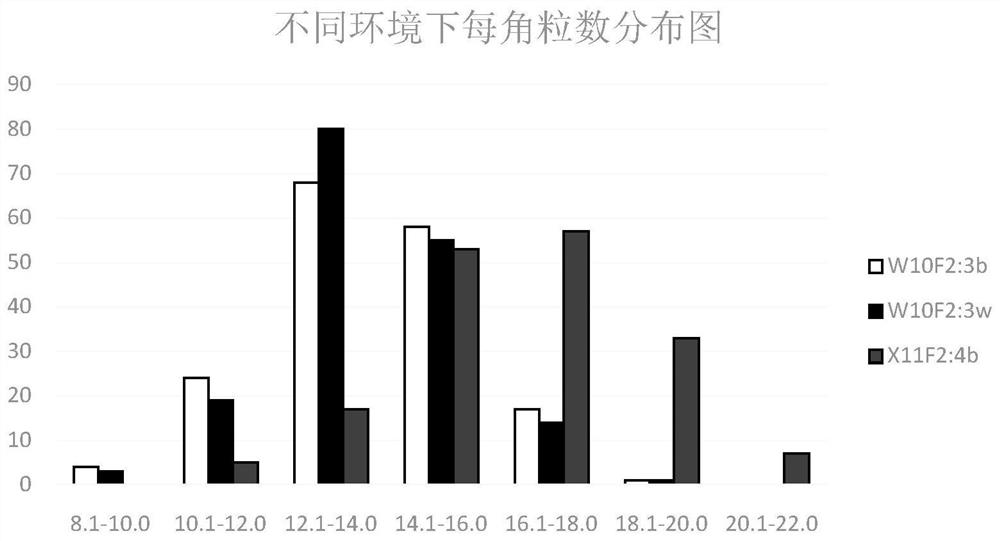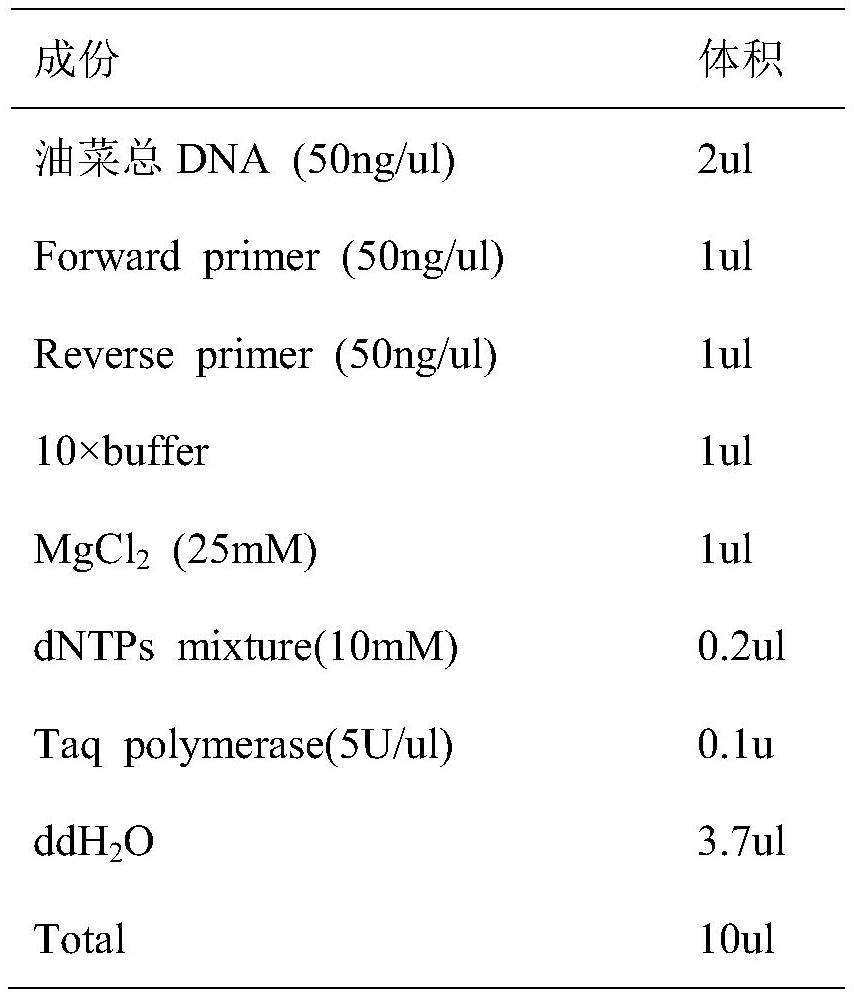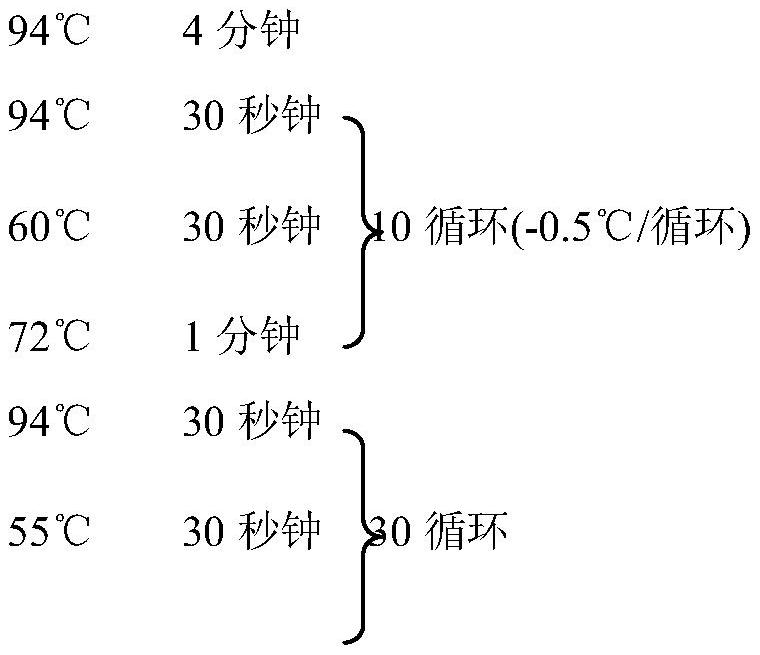A Molecular Marker Primer and Application of the Main Effect Gene Locus of Rapeseed Seeds Per Corner Trait
A molecular marker and grain number technology, applied in the fields of molecular biology and genetic breeding, can solve the problems of high quality requirements, high cost, and difficult rapeseed breeding applications.
- Summary
- Abstract
- Description
- Claims
- Application Information
AI Technical Summary
Problems solved by technology
Method used
Image
Examples
Embodiment 1
[0025] Construction and trait determination of rapeseed segregated populations per corner:
[0026] The segregation populations used in this example are F2 (planted in 2009 at the Yangluo comprehensive test of the Institute of Oil Plants, Chinese Academy of Agricultural Sciences) derived from the parents of multi-grain and few-grain rapeseed Zhongshuang 11 (≈21 grains) and 73290 (≈11 grains). Base) and its F2:3 (planted at the Yangluo Comprehensive Test Base of the Institute of Oil Plants, Chinese Academy of Agricultural Sciences in 2010) and F2:4 family (planted at the Qinghai University Test Base in 2011). The phenotypes of the number of seeds per corner of the two parents and the two populations were identified after harvesting at the maturity stage. The test data of the number of seeds per corner shows that the two parents have weak superparental segregation, indicating that the multigrain gene is mainly distributed in the genome of Zhongshuang 11; Quantitative genetic tr...
Embodiment 2
[0030] Primer development and synthesis:
[0031] The SSR primers used by the applicant include two types: one is the published primer sequence in published articles and Brassica database (http: / / www.brassica.info / resource / markers / ssr-exchange.php); the other is It was developed by the applicant based on the sequences of cabbage and cabbage scaffolds, named BrSF and BoSF series respectively. The specific development method is to use SSR Hunter software to search for SSRs in each scaffold, and then use Primer3.0 software to design SSR primers. The self-developed InDel primers are obtained by comparing the resequencing sequence of 73290 with the reference genome sequence of Zhongshuang11. First, the resequencing sequence of 73290 is positioned on the whole genome reference sequence of Zhongshuang11 using BWA software, and then Use samtools software to find InDel.
Embodiment 3
[0033] The screening process of primer polymorphism is as follows:
[0034] (1) Randomly select 10 strains of DNA from each parent and mix them in equal amounts as templates for screening primers.
[0035] (2) Utilize the primers after dissolving to carry out PCR amplification to the parental DNA,
[0036] reaction system:
[0037]
[0038] PCR reaction program:
[0039]
[0040]
[0041] (3) Gel electrophoresis band pattern interpretation
PUM
 Login to View More
Login to View More Abstract
Description
Claims
Application Information
 Login to View More
Login to View More - R&D
- Intellectual Property
- Life Sciences
- Materials
- Tech Scout
- Unparalleled Data Quality
- Higher Quality Content
- 60% Fewer Hallucinations
Browse by: Latest US Patents, China's latest patents, Technical Efficacy Thesaurus, Application Domain, Technology Topic, Popular Technical Reports.
© 2025 PatSnap. All rights reserved.Legal|Privacy policy|Modern Slavery Act Transparency Statement|Sitemap|About US| Contact US: help@patsnap.com



